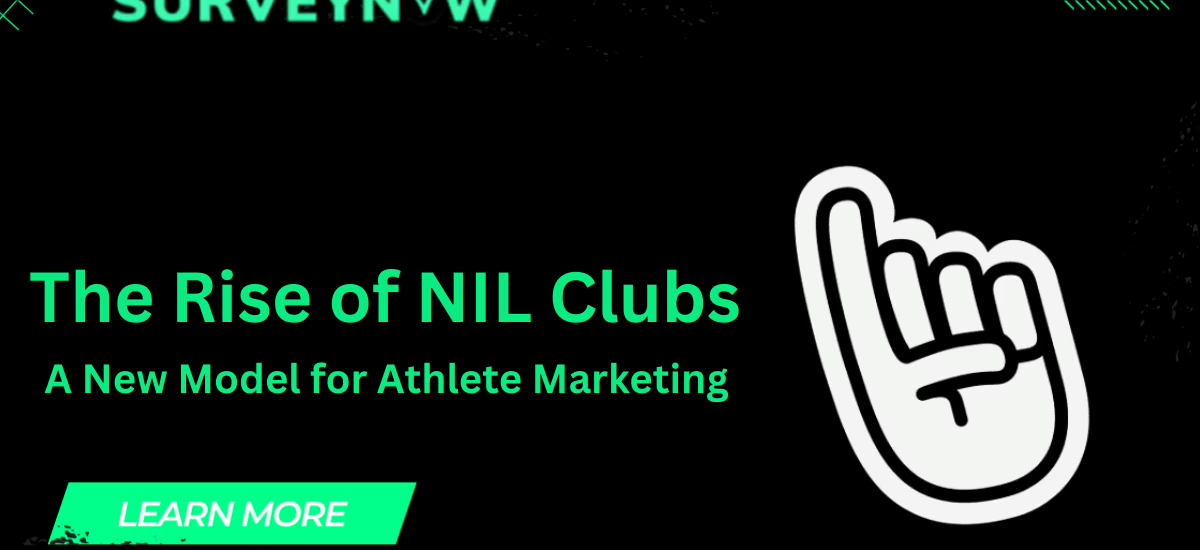Name, Image, and Likeness, or NIL, opened the door for athletes to earn from their personal brand. It has reshaped locker rooms, recruiting pitches, and the way schools discuss opportunities. It has also pulled athletes into the $32.5 billion influencer market, where authenticity is the currency.
85% of young consumers say that social media influences their purchasing decisions. For brands, that is more than a number. It is a direction.
The question now is not if athletes can drive sales. Which system works best to connect them with fans and companies?
Collectives, which were fueled by donors, or the new wave of student-led NIL Clubs.
The Rise of Student-Led NIL Clubs
When NIL first arrived, many athletes leaned on collectives. These were groups formed by boosters or alumni who gathered money and distributed it.
It initially worked, but the results were uneven. Most of the funds were allocated to football and basketball players, leaving other sports with limited resources. Because the money often came from donors, the entire setup appeared to be pay-to-play.
Student-led NIL Clubs are creating new opportunities for both athletes and brands. Developed by Atlanta-based startup YOKE, the clubs were designed to provide all athletes with access to NIL money.
The idea is simple. Athletes start their own club, fans subscribe, and the money goes directly to the players. No booster influence. No middle step. Just athletes and fans in direct contact.
This matters because it opens doors. Collectives favored a few. NIL Clubs are available to everyone. A volleyball captain can build a fan community just as strong as a quarterback. Every athlete has a story, and now those stories can create value.
YOKE’s model also helps brands looking for college athlete ambassadors.
Instead of chasing one-time endorsements, athletes can form clubs and pool their resources to draw the attention of companies. A brand no longer has to wonder if only the star players are worth investing in. NIL Clubs make it easy to reach entire teams and spread opportunities across rosters.
How NIL Clubs Make Endorsements Simple
Athletes promoting products is not a new concept. Professional players have been in commercials for decades. What is new is how quickly college athletes have become a strong way for brands to reach young audiences.
The reason is clear. Gen Z has less interest in watching TV ads or flipping through magazines. They spend their time on TikTok, Instagram, and YouTube. If brands want attention, they need to show up there. YOKE’s NIL Club makes that possible.
The platform has built a network of over 650,000 athletes, who can collectively reach more than 1.5 billion people.
Most student-athletes do not have massive follower counts, but their audiences engage at higher rates. Many followers know the athletes personally, whether through their school, hometown, or sport. That closeness makes their content feel real.
Professional influencers often see engagement rates between 1 and 3 percent, with anything above 3 percent considered strong. College athletes average about 5.5 percent.
Brands Looking for College Athlete Ambassadors
NIL Club recently introduced a feature called Brand Deals. It provides companies with a direct way to connect with athletes.
SoFi, Amazon, Ulta Beauty, and more are already active. More brands are expected to join soon.
If Gen Z spends its time on social platforms, and athletes are trusted voices there, then the partnership makes sense.
For brands, the NIL Club represents a shift from the collective model. Instead of relying on money to reach the right players, companies can now target athletes who align with their values.
A financial company like SoFi can work with athletes who seek to improve their savings. Ulta can work with women’s teams, sharing personal care routines. Amazon, with its extensive range of products, offers options across various sports.
Other industries are also showing interest. Expect to see fitness apps, fashion lines, health companies, and even local businesses joining in on the trend.
For athletes, that means new ways to earn. For brands, it means finding ambassadors who feel unscripted.
Athlete-Brand Campaigns in Action
NIL Club has already proven its impact. In less than a year, the company has delivered over 100,000 verified conversions for partners such as SoFi and Amazon. Its campaign options are built around clear performance and transparent pricing.
- Cost-Per-Action (CPA) campaigns: Brands pay a fixed fee for each verified action, such as an app download, account sign-up, or product purchase.
- Commission and Affiliate campaigns: Companies pay a percentage of the sales generated by athlete promotions. Athletes benefit when their followers take action.
- Product Seeding campaigns: Brands pay a flat platform fee per athlete. Products are sent to athletes, who then share them naturally with their audiences.
Every campaign comes with detailed reporting, so companies know exactly what they are getting in return.
The Future of Athlete Influencer Marketing
The NIL movement has given athletes a new way to earn and brands a new way to connect. Collectives opened the door, but they relied too heavily on donors and often rewarded only a few. NIL Clubs take a different approach. They are run by the athletes themselves and supported directly by fans and brand partners.
This matters because it broadens opportunity. A volleyball player at a smaller school can launch a club just as easily as a football player at a powerhouse program. Every athlete can now build a community and leverage it for financial support.
For brands, the appeal is clear. They can connect with athletes who match their audience and values. NIL Clubs show that the future of sports marketing will be built on community and authenticity.
NIL money is no longer only for headline stars. It belongs to entire rosters and student-athletes who understand the value of their influence. The future will be written by athletes who control their own platforms, and by brands that see the power in those connections.


